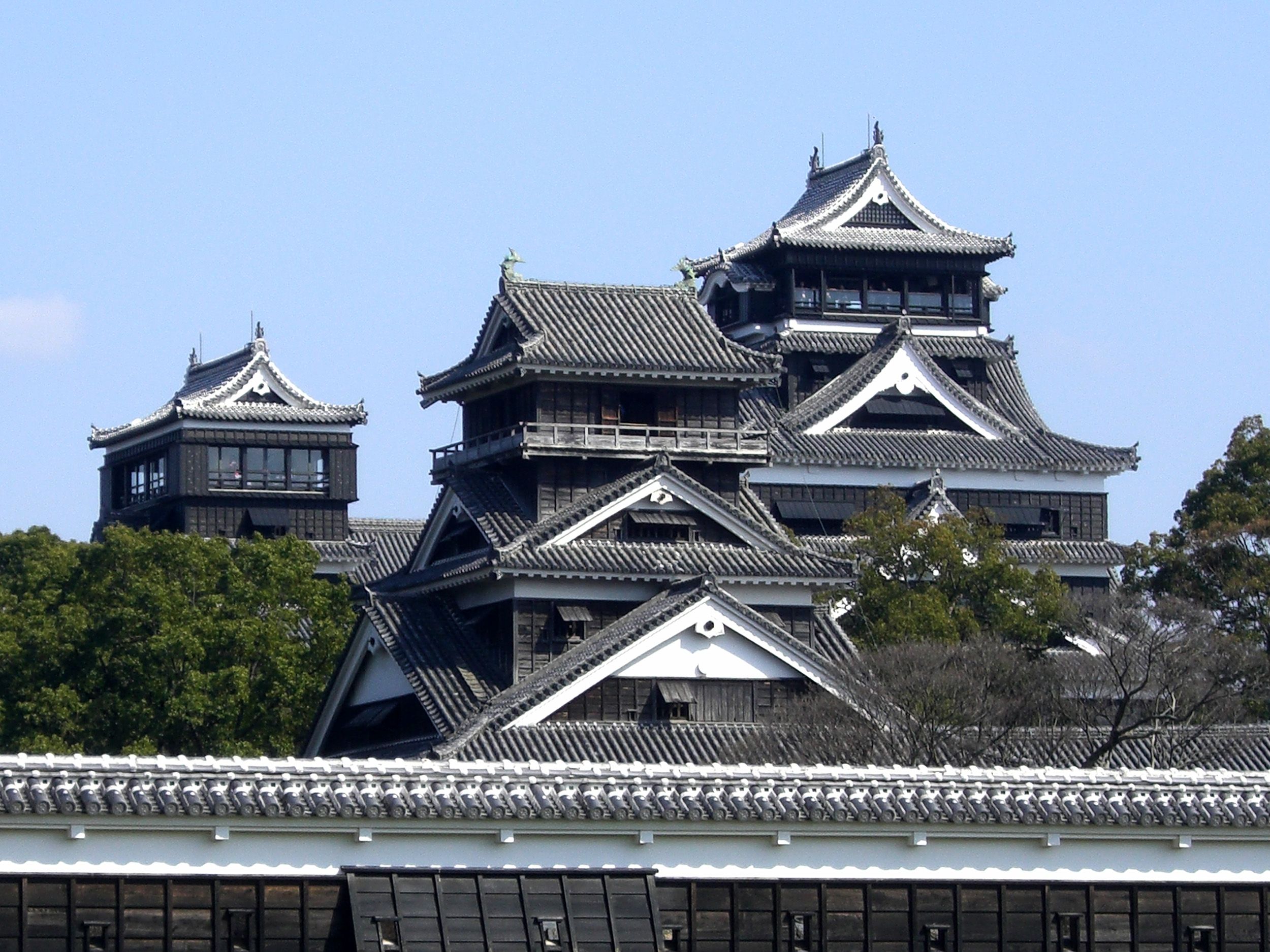Kumamoto Castle is a Japanese castle located in Kumamoto City, the capital city of Kumamoto Prefecture in Kyushu. It is regarded as one of the three best castles in Japan together with Himeji and Nagoya castles. Let’s learn more about the historical castle in this travel guide!


History of Kumamoto Castle
There was already a castle in this location in the mid 15th century. Then feudal lord Kato Kiyomasa, who was regarded as the best castle builder at that time, started reconstruction of the castle in 1591 and completed it in 1606. It was a large castle that was extremely well fortified for that time. The curved rock walls known as musha-gaeshi as well as the protruding wooden roofs were designed to prevent enemies from penetrating the castle. Kato planted ginkgo trees on the castle grounds, so the castle is also called Ginkgo Castle.
It was never attacked during the feudal time, so the castle remained as it was until the Seinan Civil War in 1877, also known as the Satsuma Rebellion. It was looted and burned after 53 days of siege. The rebellion was done by the samurai group in Satsuma who had complaints against the new Meiji Government. The story of the movie The Last Samurai was inspired by this incident.
The main castle tower was destroyed during the rebellion, but some castle towers and stone walls survived. In 1960, the main tower was restored. Though it was constructed with reinforced concrete, it looked like an original wooden castle. Inside of the castle was a museum that explained the history of the castle and the Seinan Civil War.
Kumamoto Castle Now

Kumamoto Castle recently celebrated its 400th anniversary. On 27 December 2007, a large-scale renovation of the Lord’s Interior Palace was completed. The public ceremony to celebrate the renovation took place on April 20, 2008. Unfortunately, in April 2016, a big earthquake of magnitude 7.0 hit Kumamoto city and a large part of the castle was damaged. It is said that it will take 20 years to complete the restoration work for the whole building.
The area is a popular place to enjoy cherry blossom viewing. The scenery of the castle together with cherry blossoms is really photogenic.
Suizenji Jojuen Park
Not far from the park, you can find the Suizenji Jojuen Park which is one of the most stunning Japanese landscape gardens in the prefecture. Like in many typical Japanese gardens, the garden itself is a miniature version of a landscape of somewhere else.
This garden is depicting the Tokaido road that leads from Edo (now Tokyo) to Kyoto and used to be the most important trade route of the Edo period. With a bit of imagination, you can see the 53 post towns in the elements of the garden when you walk around the pond. The garden was built in the 17th century by the Hosokawa daimyo family.
Your Japan Tour
As seasoned Japan experts, we create perfect Japan package tours including destinations like Kyushu. Check out our group tours and private tours, or contact us to start planning your unforgettable holiday to this fascinating country full of once-in-a-lifetime experiences, culture, history, nature, and delicious food!
Access Information
From Kumamoto-jo or Sakuracho-Bus-Terminal bus stop or Kumamoto-jo-Shiyakusho-mae tram station
You cannot enter the castle, but you can see the process of restoration from up close.

